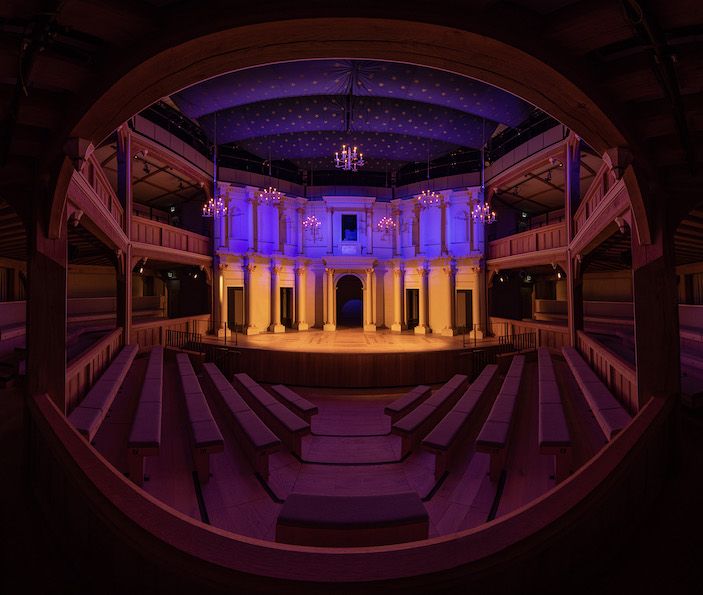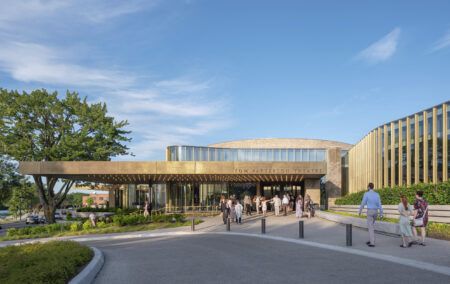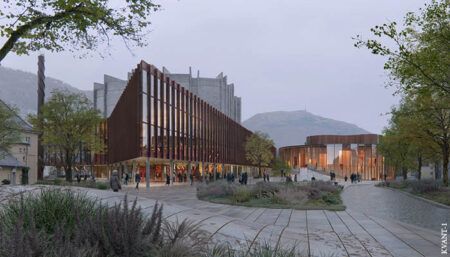Shakespeare North Playhouse has unveiled its newly installed frons scenae as part of a reconstruction of the Cockpit-in-court Theatre stage. It will be available to view until 23 September 2023.
This addition promises to enrich the theatrical experience, while further cementing the playhouse’s reputation as a premier destination for Shakespearean performances and historical exploration.
The frons scenae, a term derived from ancient Roman theatre architecture, refers to the grand backdrop that frames the stage, encompassing the stage itself and the surrounding architectural elements. It’s a reconstruction of Inigo Jones’ Cockpit-in-Court Theatre and is, in essence, a ‘building within a building’ removing the traditional ‘backstage’ and transforming the on-stage space. This installation in the Cockpit Theatre, nestled within the heart of Shakespeare North Playhouse, is the only frons scenae in the UK outside of London, the other being situated in the Sam Wannamaker Playhouse in Shakespeare’s Globe.
Audiences will be able to experience the newly installed frons scenae in action during Shakespeare North Playhouse’s upcoming production of Macbeth (1-23 September 2023) a co-production with English Touring Theatre and Shakespeare North Playhouse. Theatre-goers will also be able to see the production as part of the Shakespeare North Playhouse Guided Tours, which run continuously throughout the year.
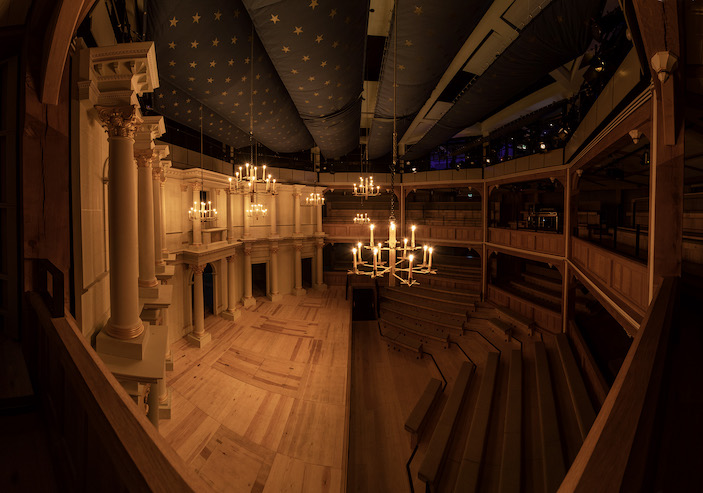
Crafted by a team of artisans, designers and architects, and erected by timber frame specialists McCurdy & Co, which built the reconstructed Shakespeare’s Globe in London, the frons scenae is a bespoke design.
Once Macbeth has finished its run at Shakespeare North Playhouse, the frons scenae will be removed from the Cockpit Theatre and the space will be placed into its in-the-round configuration in time for The Book of Will (19 October – 11 November).
Nicholas Helm, architect for Shakespeare North Playhouse explains: “The Cockpit of Jones that opened on 5 November 1630, held within it a certain type of scene. The interior – being a permanent transformation – was architecture not scenery. It was a Roman outdoor stage wall brought indoors – a frons scenae as at Palladio’s Teatro Olympico on which it was primarily based. This strategic intervention was architecture as stage set and it was a fixed scene – it was both; but it was not scenery. Usually, architecture reads outside and inside with a complete language, but this interior was a building within a building. The Renaissance interior was made to hide, transform the original Cockpit, it was a disguise, more literally, a mask.”
“Perhaps in the Cockpit design in the late 1620s the King and Jones colluded and decided, with a sense of the unrest that was brewing, that the ‘stuff’ of Renaissance architecture was after all safer indoors; and the content safer in the hands of playwrights. Jones was master of the Masque form, from 1604 – this was a different mask – an architectural-theatrical one!”
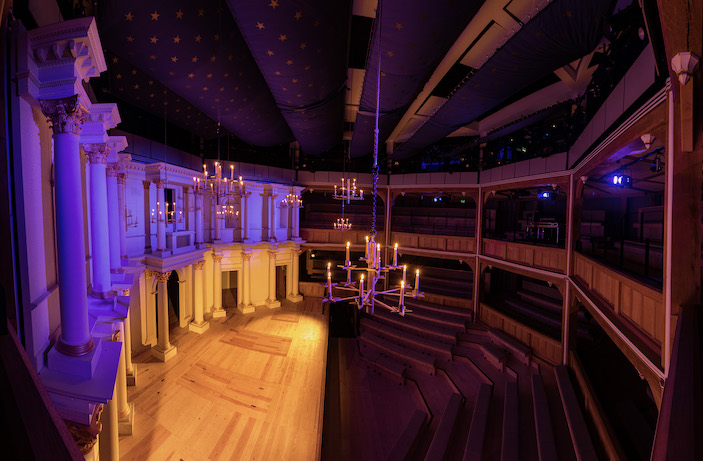
“When asked by Professor Richard Wilson to “find a replica” in March 2006 I realised the Cockpit of Jones was the answer – the Shakespearean replica still to be built, frons scenae and all. Professor Andrew Gurr supported the choice as did Richard and Professor Elspeth Graham, they encouraged the Shakespeare North Trust to do so as well and in turn Knowsley Council with Paula Williams at the fore. 11 years later, 14 March 2017 – I met with Peter McCurdy and introduced him to the extant drawing, the idea and the research, as he was about to be commissioned by KMBC to make the timber structure for the Cockpit in Prescot.”
“The extra challenge for Peter and his team (as well as the design team as a whole) was that – unlike the Jones version for Whitehall – this frons scenae had to be removable; returning to the host cockpit frame format. And, despite this, the stage wall (frons) still had to have the weight and gravitas of architecture not scenery. That is what it does – you can now judge for yourself – as you look on to a component of a Renaissance theatre not seen for nearly 400 years.”
“The rest is history: last summer we had the opening with the Cockpit arrangement only now we have the extraordinary transformation to the Jones frons scenae version as well.”
“Congratulations to all involved on the design, research and implementation journey; but most important congratulations to the Playhouse, the town of Prescot and its people. What a threshold moment to become the host to such a rare jewel of a theatre, unique in the world – the globe!”
“What has come about is as surprising as it is uplifting. Prescot is now centre stage, and an international star in perpetuity – a place of regeneration and creativity second to none.”


